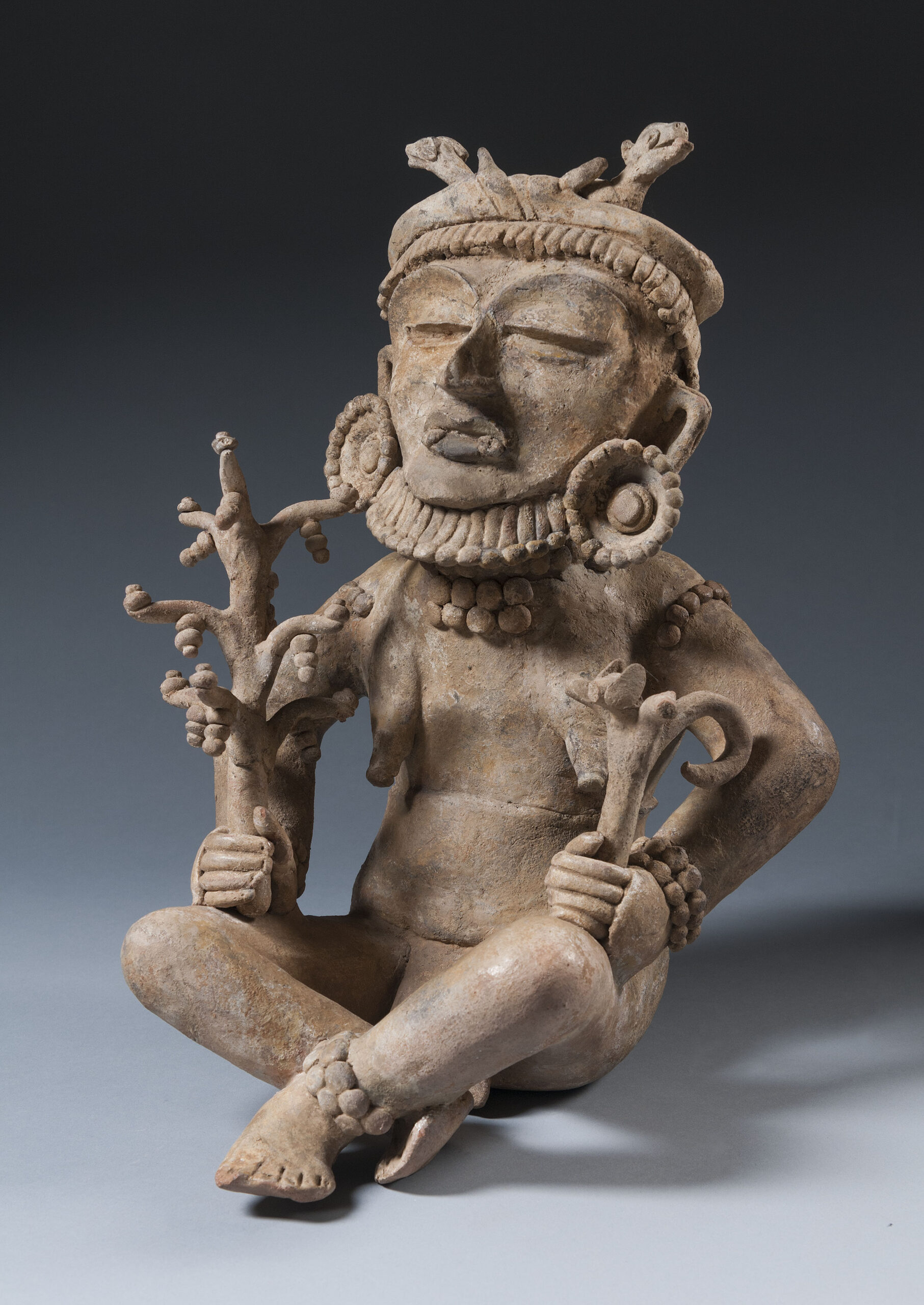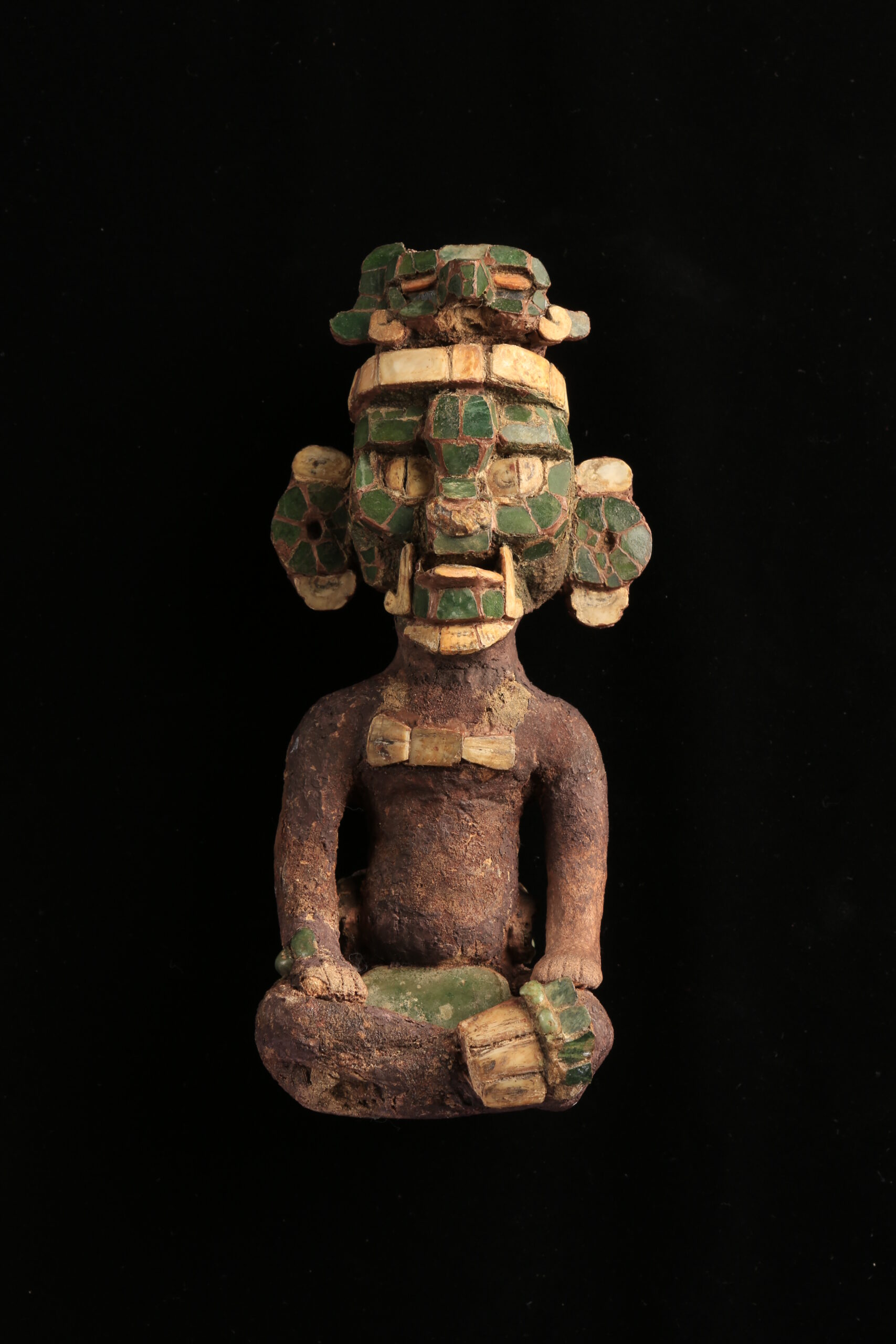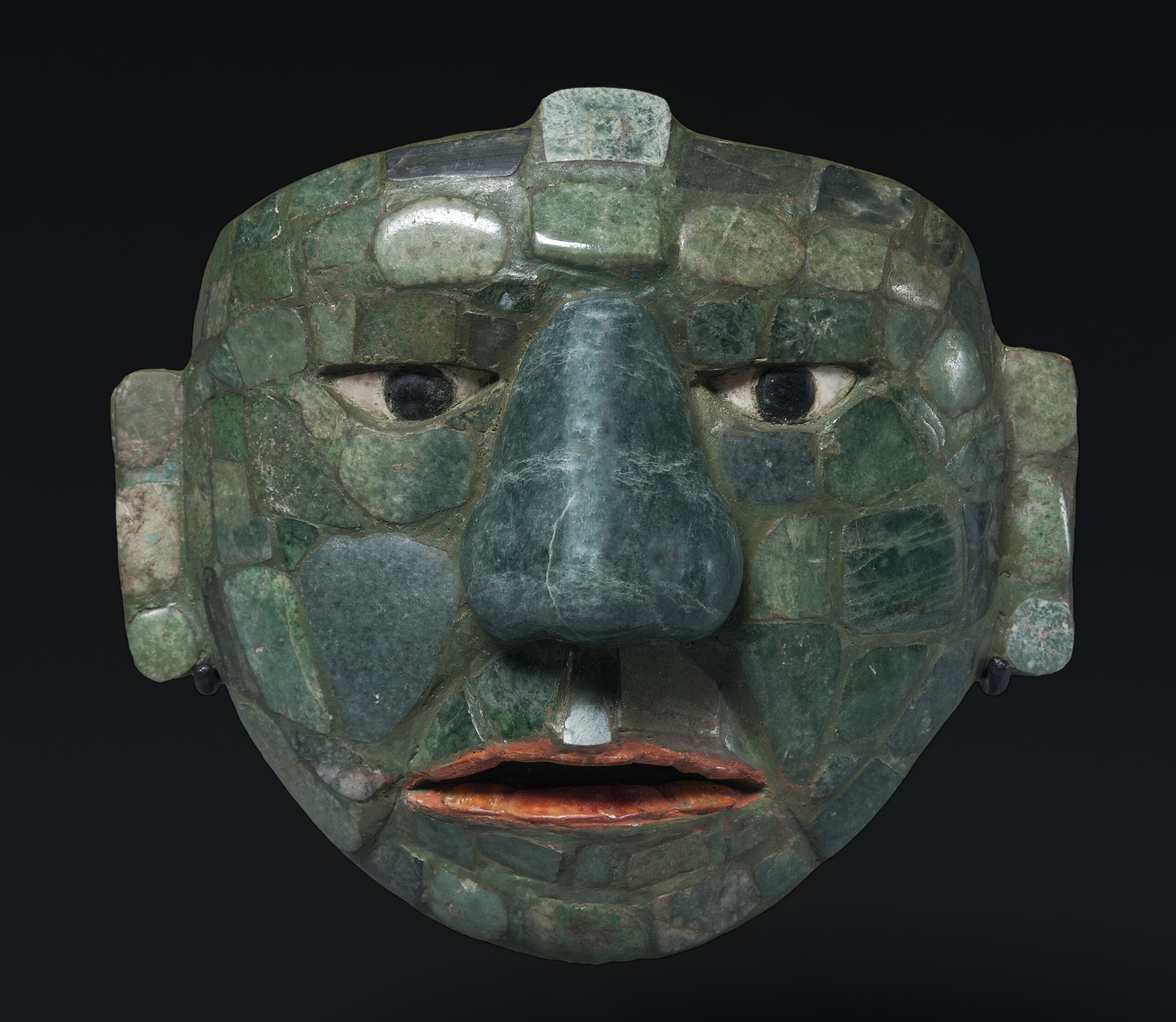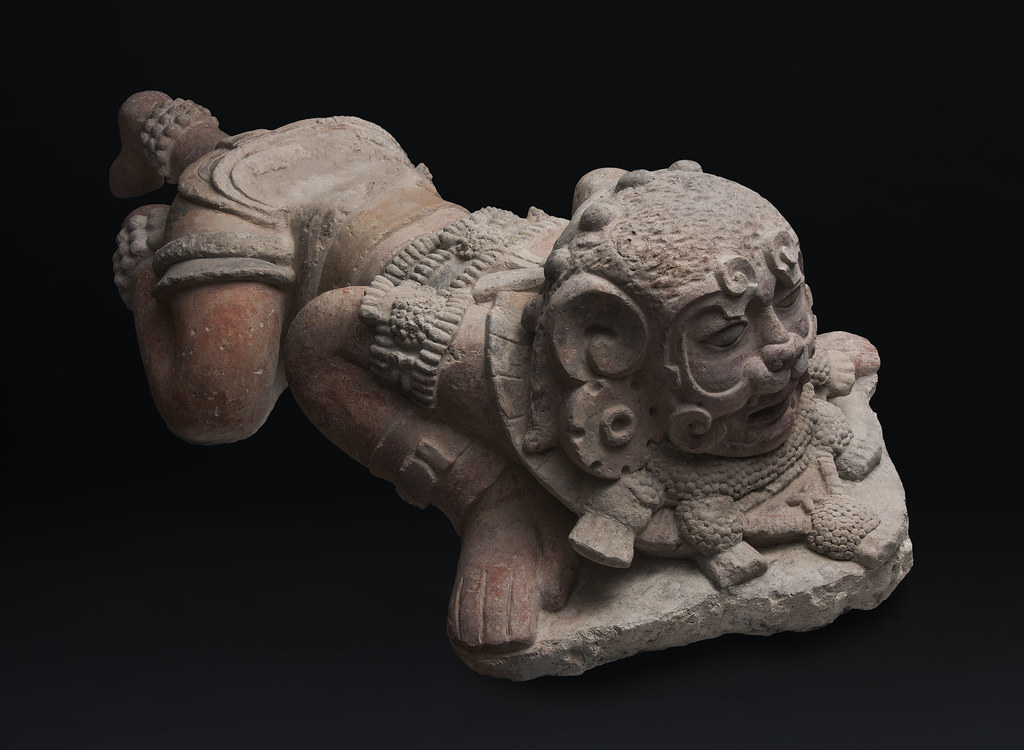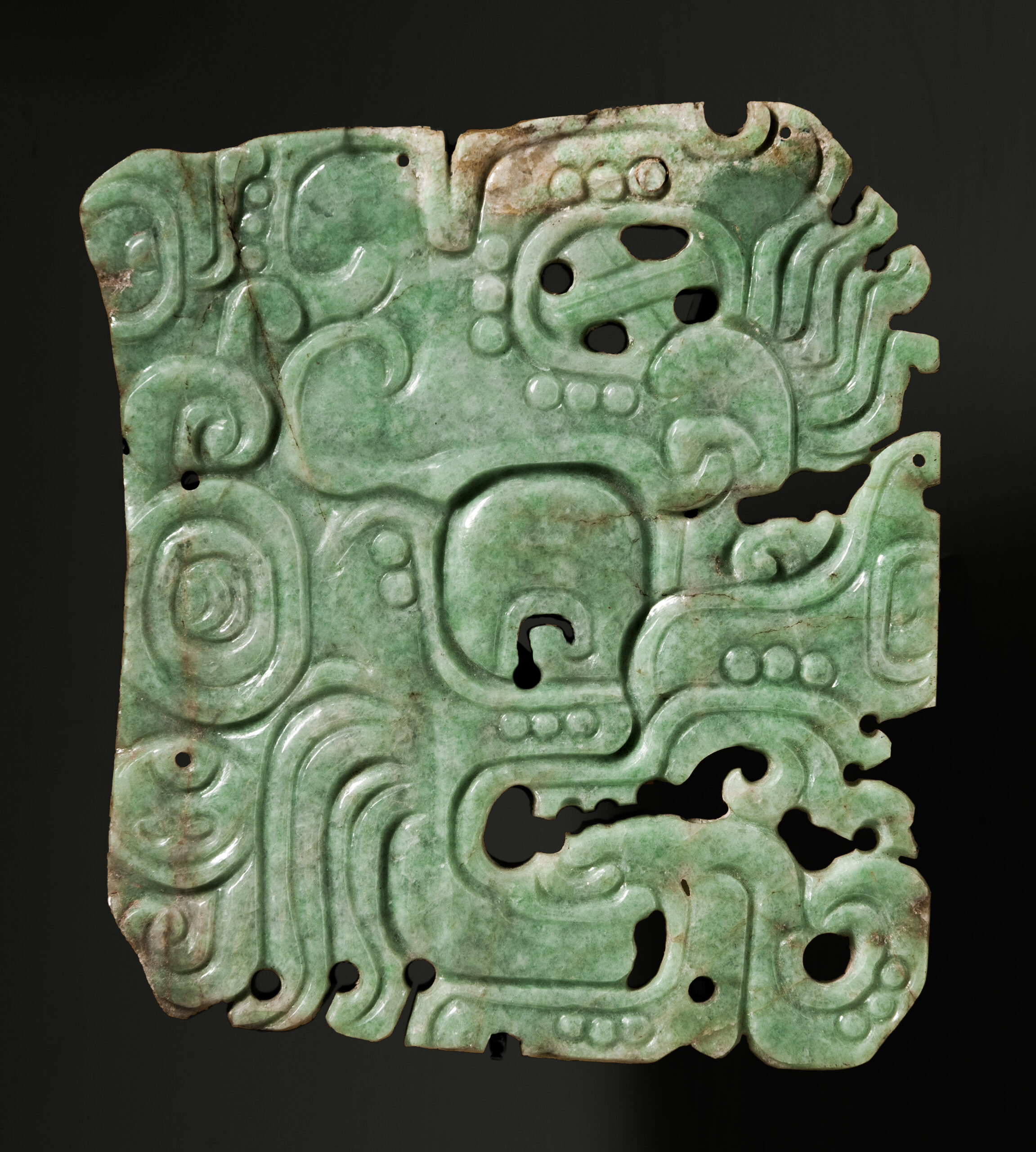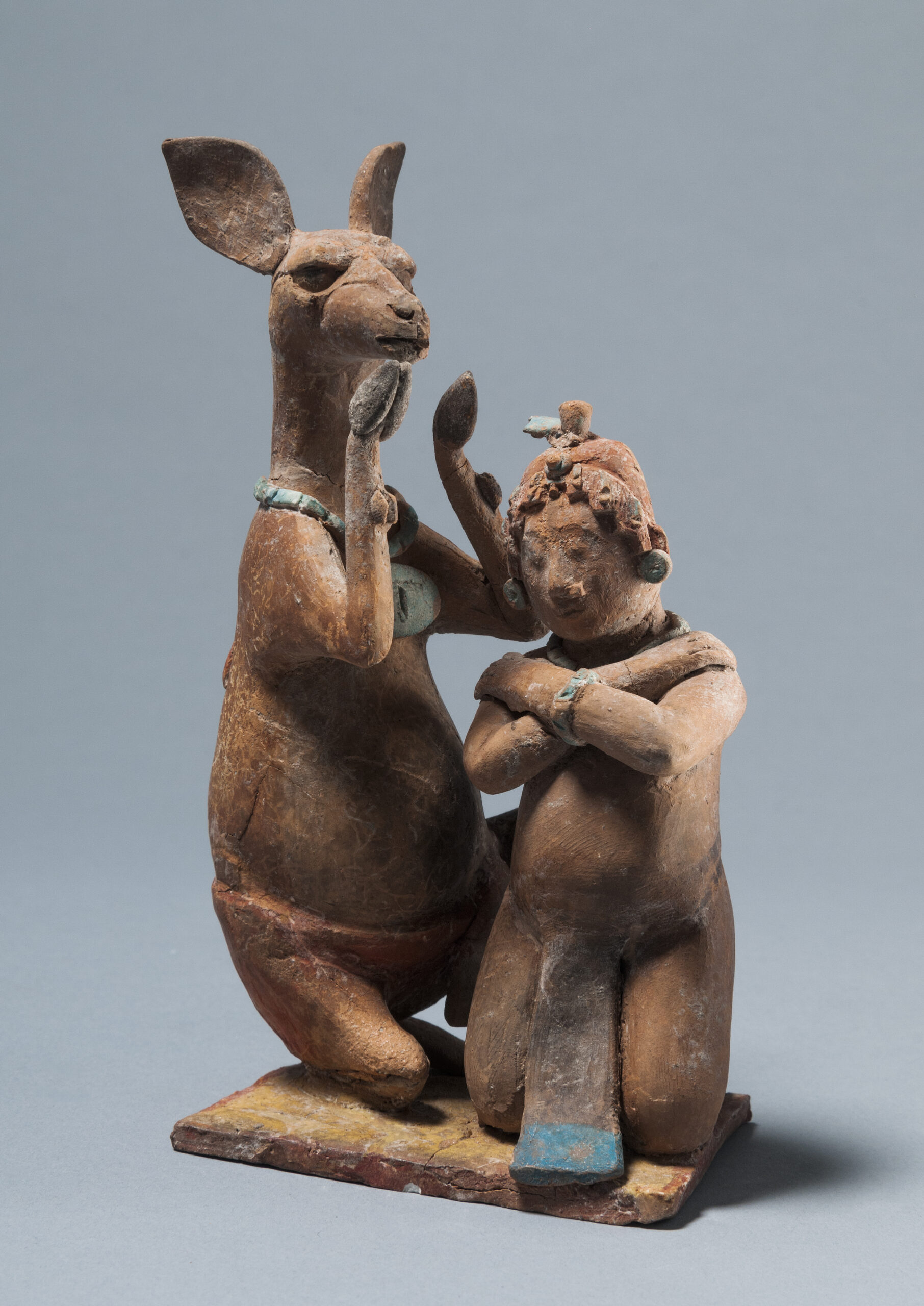On the second floor of the Royal BC Museum in Victoria the sound of bird calls, mystery animal squeaks and insects buzzing overhead—authentic recordings from the tropical forest in the lowlands of Guatemala—fill the air as we enter Maya: The Great Jaguar Rises.
This major exhibition displays more than 300 Mayan artefacts dating back some 3,000 years—precious pieces of jade, ceramics, stone and textiles—many of which have never been seen by the public in their home of Guatemala, let alone internationally.
“These pieces represent incredible cultural value and a rare opportunity for us,” explains the show’s guest curator, Dr. Nikolai Grube, professor of Mayan archaeology and anthropology at the University of Bonn. “Guatemala does not easily give these pieces away—they are national treasures.”
We walk through the replica Tikal temple entrance into a dimly-lit room to one of the professor’s favourite pieces. “The function of this room is to present you to the Mayans,” he says. “And they greet you with their gods.” In the centre is a table with three deity-shaped incense burners flanked by a series of burial figurines representing members of the royal court. “The King and Queen of Abaru, scribes, musicians, ballplayers—they all say ‘Hello. Welcome to the Mayan world.’”
Walking down a path of monstera leaves and palms lead us to one of the most unique aspects of the exhibit. The murals of San Bartolo, only discovered about 50 years ago, stretch across the museum wall in a startlingly crisp reproduction of the originals, hidden deep in the Guatemalan forest. We hear the Mayan creation story featuring the maize god retold by a Guatemalan law student via video. She speaks in one of the 30 Mayan languages still in use by some six million people today. “This year is the UNESCO Year of Indigenous Languages,” Grube notes, “and we want to celebrate these still vibrant and actively communicated languages in Guatemala and southern Mexico.”
An original hieroglyphic panel features 160 glyphs, to be read left-to-right, top-to-bottom, in double columns. With the Spanish conquest, the knowledge of this ancient written language was destroyed, and had to be pieced back together by anthropologists. Approximately 70 to 80 per cent of the Mayan hieroglyphs have been deciphered, Grube notes, with new breakthroughs happening every few months. Each glyph is composed of several signs that combine to create one word. At the exhibit entrance, there are glyphs depicting the Maya arriving at the edge of the ocean. Grube—who produced them—wanted to create something appropriate for Victoria.
Thanks to scenes depicted on Mayan ceramics, we know that the Mayans found time to have fun, playing games, including one (known today as chaa or pok ta pok). Using a basketball-sized rubber ball, players would wear protective clothing and leather pieces on their hips, elbows and knees—the only places that could touch the ball—an indicator for how violent the game must have been. In the last five years, contemporary Maya have revived chaa, and the world cup sees teams from Guatemala, Honduras, Yucatan and Belize competing.
As we approach the crouching jaguar sculpture from which the exhibition takes its name, exhibition collaborator Sofia Paredes-Maury—director of the Ruta Maya Foundation—explains how this unique piece made of stucco, like so many of the exhibits here, was bought and sold on the black market before being recovered by her organization and repatriated to Guatemala.
A construction crew was demolishing a cattle ranch in Guatemala and unearthed the jaguar, promptly selling it to a private collector. But, when they came to lift it out of the ground, they used ropes—believing it to be a stone sculpture—and broke it in half. The jaguar was restored, although the place where it split remains visible. Later, following new cultural heritage laws, the private owner brought it (and 49 other pieces) to the Ruta Maya Foundation to be registered and returned to the Guatemalan public.
The large sculpture, seemingly creeping across the museum floor, depicts a man dressed as a jaguar, wearing a mask and short skirt of jaguar skin. The man is a dancer, Paredes-Maury explains, his anklets resembling little shells that would be worn to make noise while performing.
“The jaguar is the most important animal in Maya mythology,” adds Grube.
At the end of the exhibit is a room filled with colourful and intricate textiles and threadwork, ceremonial images and a modern incense altar. Including the latter, Grube explains—an echo of the incense burners that greeted us—was no coincidence.
“The rise of the jaguar is part of the Mayan creation mythology,” he says. “And it remains a strong association in contemporary Mayan culture.”
Maya: The Great Jaguar Rises runs until December 31 at the Royal BC Museum in Victoria.

